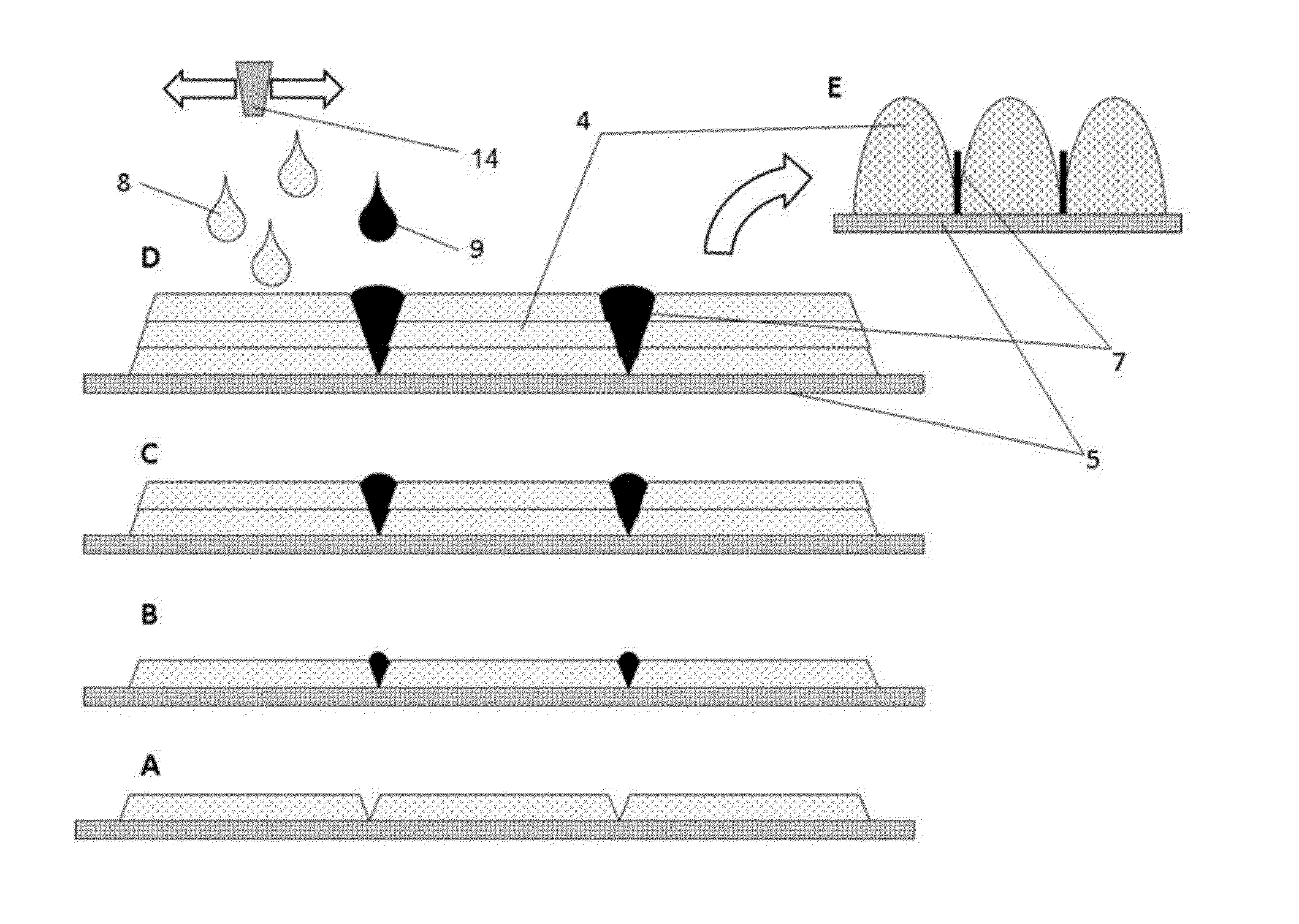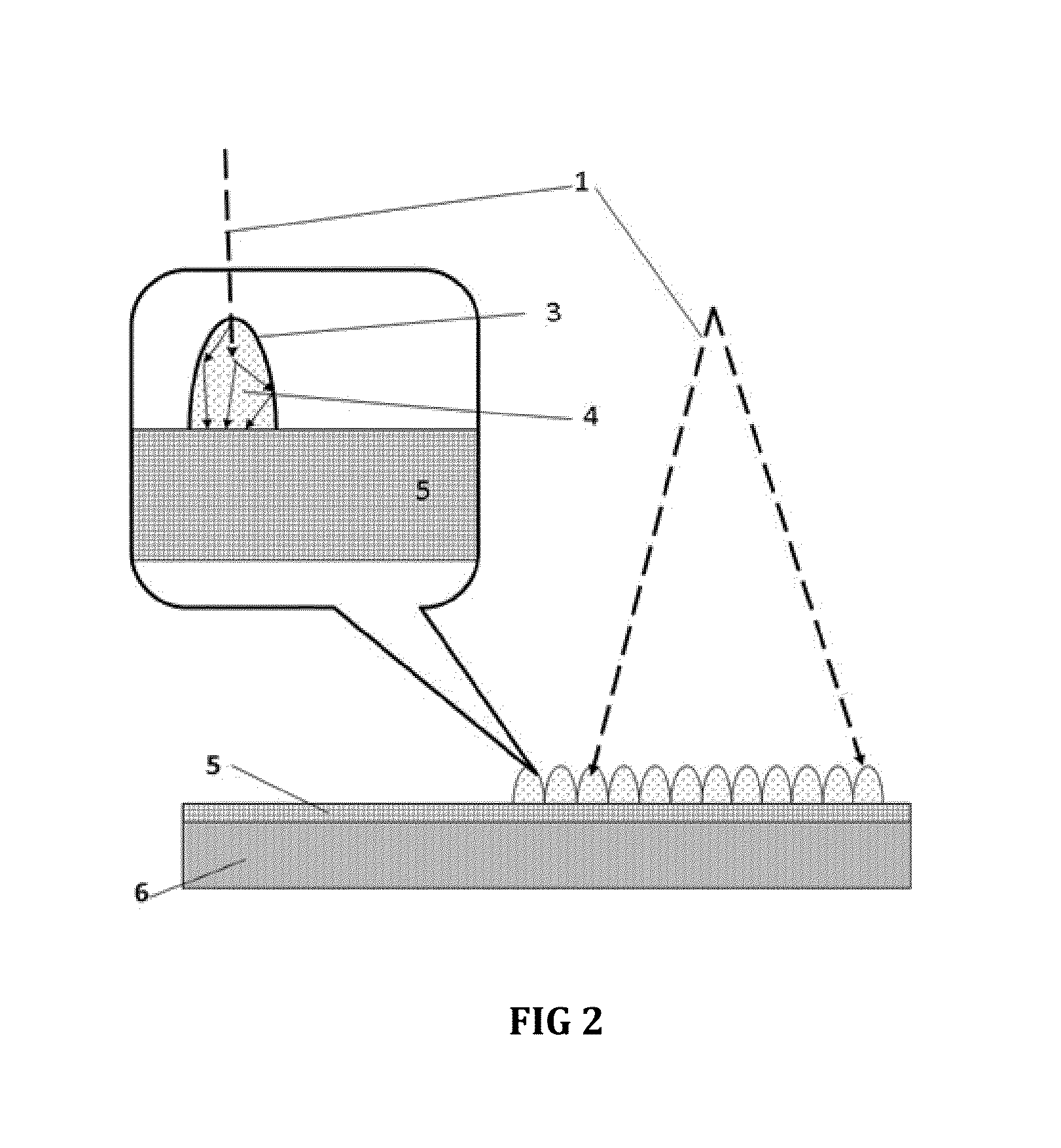Scintillation Detector and Method for Forming a Structured Scintillator
a detector and structured technology, applied in the direction of instruments, x/gamma/cosmic radiation measurement, radiation intensity measurement, etc., can solve the problems of high cost of structured phosphor products, so as to improve the manufacturability of forming structured scintillators, eliminate the effect of scattering
- Summary
- Abstract
- Description
- Claims
- Application Information
AI Technical Summary
Benefits of technology
Problems solved by technology
Method used
Image
Examples
embodiment 1
[0042]FIG. 1 shows a general view of the structure of the scintillator made using the proposed method of embodiment 1 and its orientation with respect to the detected radiation source 1 and the pixelated photodetector 2.
[0043]The scintillator according to embodiment 1 comprises a plurality of scintillation structural elements 3 produced from the material that is a phosphor composition 4. Such a detector has a higher contrast of the detected image due to the absence of the effect of scattering between adjacent pixels of the array photodetector 2 due to the physical isolation of adjacent pixels (not shown in the drawings) of the photosensitive area 5 (FIG. 2) at the level of scintillation coating, namely the phosphor 4. Indeed, the light produced by the phosphor 4 will only reach the area of “its own” pixel and will not reach the adjacent one. The photosensitive area 5 of the array photodetector is located on the substrate 6 (basis). The scintillator according to embodiment 1 may cont...
second embodiment
[0052]the formation of the pixelated structure of the phosphor coating deals with the two or more stage process, during which the hydrophobic coating material 22 is deposited between the areas of individual photosensitive pixels using the discrete printing method (described above), in order to divide the photosensitive area of the array photodetector 5 with hydrophobic protective strips 23 into pixel areas (FIG. 6). In this case, an active (photosensitive) areas of the pixels may be coated with a hydrophilic material (not shown in the drawings). Thereafter, the photodetector is brought into contact with the phosphor material 8 (phosphor suspension solution), for example, by means of immersing or pouring. A component of this solution (phosphor 4) is deposited only on the areas that have not been coated with the hydrophobic substance. Finally, the pixelated structure is immediately formed on the entire surface due to various effects of surface tension (such as the formation of water d...
embodiment 2
[0053]Another important feature of the method for manufacturing of detectors of penetrating radiation is, the ability to modify the properties of the scintillator across the depth of phosphor structure 21, for example, layers with one spectrum (efficiency) of luminescence can be deposited in the surface (in the direction of penetration of X-rays or gamma rays) layers of structured phosphor, and the layers with another spectrum (efficiency) of luminescence can be deposited in the deep layers (FIG. 5B). Special X-ray absorbent layers can be deposited directly on the photodetector array followed by deposition of luminescent layers.
[0054]According to embodiment 2, the variations in the form of individual structural elements of the phosphor is possible during deposition in order to optimize the luminous efficiency and minimize consumption of scintillator material in the process of deposition (FIG. 5A).
[0055]According to methods proposed according to embodiments 1 and 2, the produced “sc...
PUM
 Login to View More
Login to View More Abstract
Description
Claims
Application Information
 Login to View More
Login to View More - R&D
- Intellectual Property
- Life Sciences
- Materials
- Tech Scout
- Unparalleled Data Quality
- Higher Quality Content
- 60% Fewer Hallucinations
Browse by: Latest US Patents, China's latest patents, Technical Efficacy Thesaurus, Application Domain, Technology Topic, Popular Technical Reports.
© 2025 PatSnap. All rights reserved.Legal|Privacy policy|Modern Slavery Act Transparency Statement|Sitemap|About US| Contact US: help@patsnap.com



